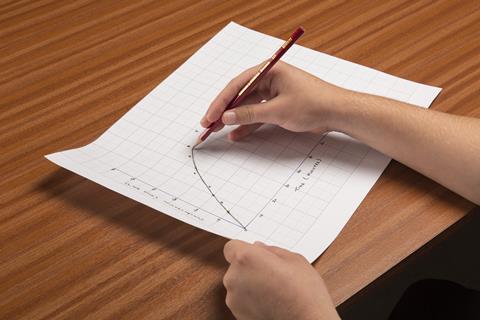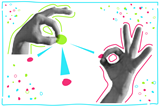How to alter existing activities to foster scientific skills
Although many of us associate chemistry education with the laboratory, there remains a lack of evidence that correlates student learning with practical work. It is vital we continue to improve our understanding of how students learn from practical work, and we should devise methods that maximise the benefits. Jon-Marc Rodriguez and Marcy Towns, researchers at Purdue University, US, recently outlined an approach to modify existing practical activities to promote critical thinking in students, supporting enhanced learning.[1]
Although many of us associate chemistry education with the laboratory, there remains a lack of evidence that correlates student learning with practical work. It is vital we continue to improve our understanding of how students learn from practical work, and we should devise methods that maximise the benefits. Jon-Marc Rodriguez and Marcy Towns, researchers at Purdue University, US, recently outlined an approach to modify existing practical activities to promote critical thinking in students, supporting enhanced learning.

Jon-Marc and Marcy focused on critical thinking as a skill needed for successful engagement with the eight ‘science practices’. These practices come from a 2012 framework for science education published by the US National Research Council. The eight practices are: asking questions; developing and using models; planning and carrying out investigations; analysing and interpreting data; using mathematics and computational thinking; constructing explanations; engaging in argument from evidence; and obtaining, evaluating and communicating information. Such skills are widely viewed as integral to an effective chemistry programme. Practising scientists use multiple tools simultaneously when addressing a question, and well-designed practical activities that give students the opportunity to engage with numerous science practices will promote students’ scientific development.
The Purdue researchers chose to examine a traditional laboratory experiment on acid-base titrations because of its ubiquity in chemistry teaching. They characterised the pre- and post-lab questions associated with this experiment in terms of their alignment with the eight science practices. They found only two of ten pre- and post-lab questions elicited engagement with science practices, demonstrating the limitations of the traditional approach. Notably, the pre-lab questions included numerous calculations that were not considered to promote science practices-engagement. Students could answer the calculations algorithmically, with no consideration of the significance of their answer.
Next, Jon-Marc and Marcy modified the experiment and rewrote the pre- and post-lab questions in order to foster engagement with the science practices. They drew on recent research that recommends minimising the amount of information given to students and developing a general understanding of the underlying theory. [2]The modified set of questions were fewer, with a greater emphasis on conceptual understanding. They questioned aspects such as the suitability of the method and the central question behind the experiment. Questions were more open and introduced greater scope for developing critical thinking.
Next, Jon-Marc and Marcy modified the experiment and rewrote the pre- and post-lab questions in order to foster engagement with the science practices. They drew on recent research that recommends minimising the amount of information given to students and developing a general understanding of the underlying theory. The modified set of questions were fewer, with a greater emphasis on conceptual understanding. They questioned aspects such as the suitability of the method and the central question behind the experiment. Questions were more open and introduced greater scope for developing critical thinking.
In taking an existing protocol and reframing it in terms of science practices, the authors demonstrate an approach instructors can use to adapt their existing activities to promote critical thinking. Using this approach, instructors do not have to spend excessive time creating new activities. Additionally, instructors will have the opportunity to research the impact of their approach on student learning in the teaching laboratory.
Teaching tips
Question phrasing and the steps students should go through to get an answer are instrumental in inducing critical thinking and engagement with science practices. As noted above, simple calculation-based questions do not prompt students to consider the significance of the values calculated. Questions should:
- refer to an event, observation or phenomenon;
- ask students to perform a calculation or demonstrate a relationship between variables;
- ask students to provide a consequence or interpretation (not a restatement) in some form (eg a diagram or graph) based on their results, in the context of the event, observation or phenomenon.
This is more straightforward than it might first seem. The example question Jon-Marc and Marcy give requires students to calculate percentage errors for two titration techniques before discussing the relative accuracy of the methods. Students have to use their data to explain which method was more accurate, prompting a much higher level of engagement than a simple calculation.
As pre-lab preparation, ask students to consider an experimental procedure and then explain in a couple of sentences what methods are going to be used and the rationale for their use. As part of their pre-lab, the Purdue University research team asked students to devise a scientific (‘research’) question that could be answered using the data collected. They then asked students to evaluate and modify their own questions as part of the post-lab, supporting the development of investigative skills. It would be straightforward to incorporate this approach into any practical activity.
Finally, ask students to evaluate a mock response from another student about an aspect of the theory (eg ‘acids react with bases because acids like to donate protons and bases like to accept them’). This elicits critical thinking that can engage every student, with scope to stretch the more able.
These approaches can help students develop a more sophisticated view of chemistry and the higher order skills that will serve them well whatever their future destination.
References
[1]J-M G Rodriguez and M H Towns, J. Chem. Educ., 2018, 95, 2141, DOI: 10.1021/acs.jchemed.8b00683
[2]H Y Agustian and M K Seery, Chem. Educ. Res. Pract., 2017, 18, 518, DOI: 10.1039/C7RP00140A
J-M G Rodriguez and M H Towns, J. Chem. Educ., 2018, 95, 2141, DOI: 10.1021/acs.jchemed.8b00683
H Y Agustian and M K Seery, Chem. Educ. Res. Pract., 2017, 18, 518, DOI: 10.1039/C7RP00140A














No comments yet